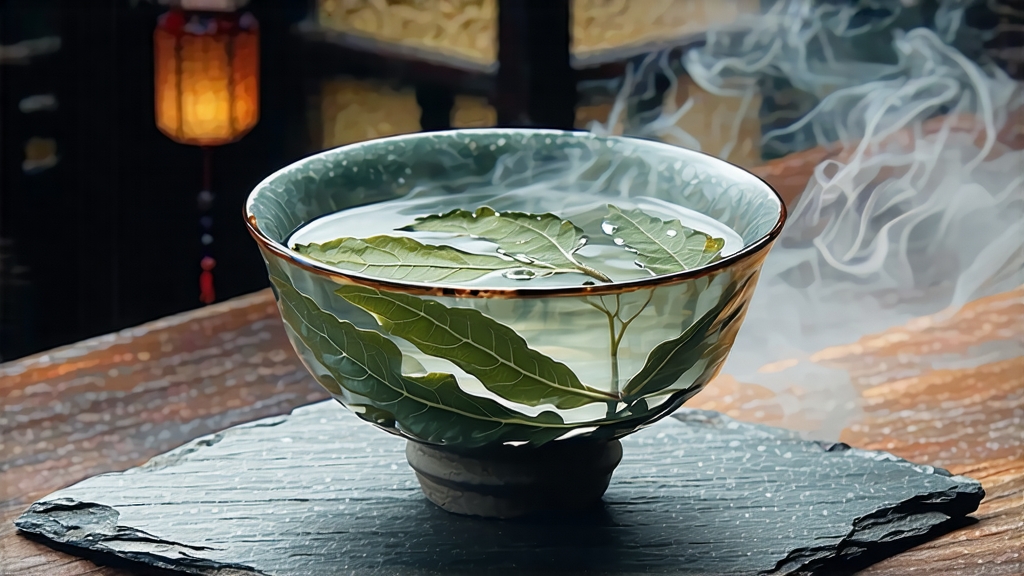
Among the six great families of Chinese tea, white tea is the least interventionist, and within that minimalist lineage Bai Hao Yin Zhen—“Silver Needle”—is the most aristocratic. International drinkers often meet White Peony or Shou Mei first, yet it is Yin Zhen that the Min River valley has long hoarded for scholars, brides, and emperors. This essay invites you into the cool, pine-scented dawn of northern Fujian to understand why a tea that is barely processed can taste like moonlight on wet stone.
-
A legend written in frost
The first written record appears in the 1796 county gazette of Fuding, where local officials listed “needle-shaped downy tea” among tribute items. Villagers insist the cultivar is older, pointing to Song-dynasty stone steles that praise “snow among the spring buds.” Whatever the date, the tea’s reputation crystallised when the Daoist abbess of Taimu Mountain offered it to the Guangxu Emperor (r. 1875-1908) as a elixir for clearing inner heat; the court reply, stamped in vermilion, simply read “continue.” From that moment Silver Needle became a currency of favour: one liang (50 g) equalled one day’s wage for a magistrate. -
Geography as co-author
Authentic Bai Hao Yin Zhen is born inside a 50-km radius around three villages—Dian Tou, Guan Yang, and Tai Mu—where granitic soils meet a maritime monsoon. The tea plant most prized is Fuding Da Bai Hao, a landrace whose buds can reach 3.5 cm in early March, cloaked in a pubescence that refracts light like powdered quartz. Night temperatures plunge to 8 °C even after sunny days; the diurnal swing forces the plant to store amino acids at the expense of polyphenols, giving the later cup its hallmark snow-pea sweetness and almost no bitterness. -
The craft of “doing nothing, on time”
Plucking begins when the bud stands erect but the first leaf is still sheathed like a closed fan—what farmers call “fish-hook stage.” Pickers work barefoot so the soil’s night chill lingers on their skin; any rise in leaf temperature starts enzymatic oxidation that would push the tea toward red. Baskets are woven from bamboo too young to resin, preventing scent contamination. Once back at the shed, the buds are spread on water-cooled bamboo trays exactly 2.5 cm thick; any deeper and self-heat would yellow the tips. For 36 to 48 hours they rest under a roof of frosted glass, ventilated by mountain breeze. No rolling, no pan-firing—only the slow surrender of moisture. When the bud’s surface feels like suede and its internal moisture drops to 8 %, charcoal bakers finish the tea at 40 °C for twenty minutes, low enough to keep enzymes alive for micro-oxidation that will continue in the tin for years. -
Grades hidden in silver
Connoisseurs recognise three unofficial grades. “Imperial Needle” comprises only buds plucked before Qingming festival; they stand needle-straight, flash silver against black cloth, and brew a liquor the colour of morning sun on white jade. “Standard Needle” allows buds picked until early April, slightly curved, still downy but with a faint green dorsal line. Finally “Rain Needle,” harvested after late-spring rains, shows a greyish cast and delivers a rounder, hay-like cup. European auctions often label all three simply “Silver Needle,” so knowing the harvest window is the only way to gauge value. -
Ageing: the slow metamorphosis
Unlike green tea, Yin Zhen improves for a decade if stored below 25 °C and 60 % humidity. Each year the amino-acid backbone condenses into diketopiperazines, adding a cooling camphor note that Chinese drinkers liken to “old book stored in sandalwood.” A 2018 study at Zhejiang University tracked theabrownin formation and found that ten-year Yin Zhen develops antioxidant profiles closer to aged pu-erh than to fresh white tea, yet retains only 15 mg caffeine per cup—half that of sencha—making it ideal for evening meditation.